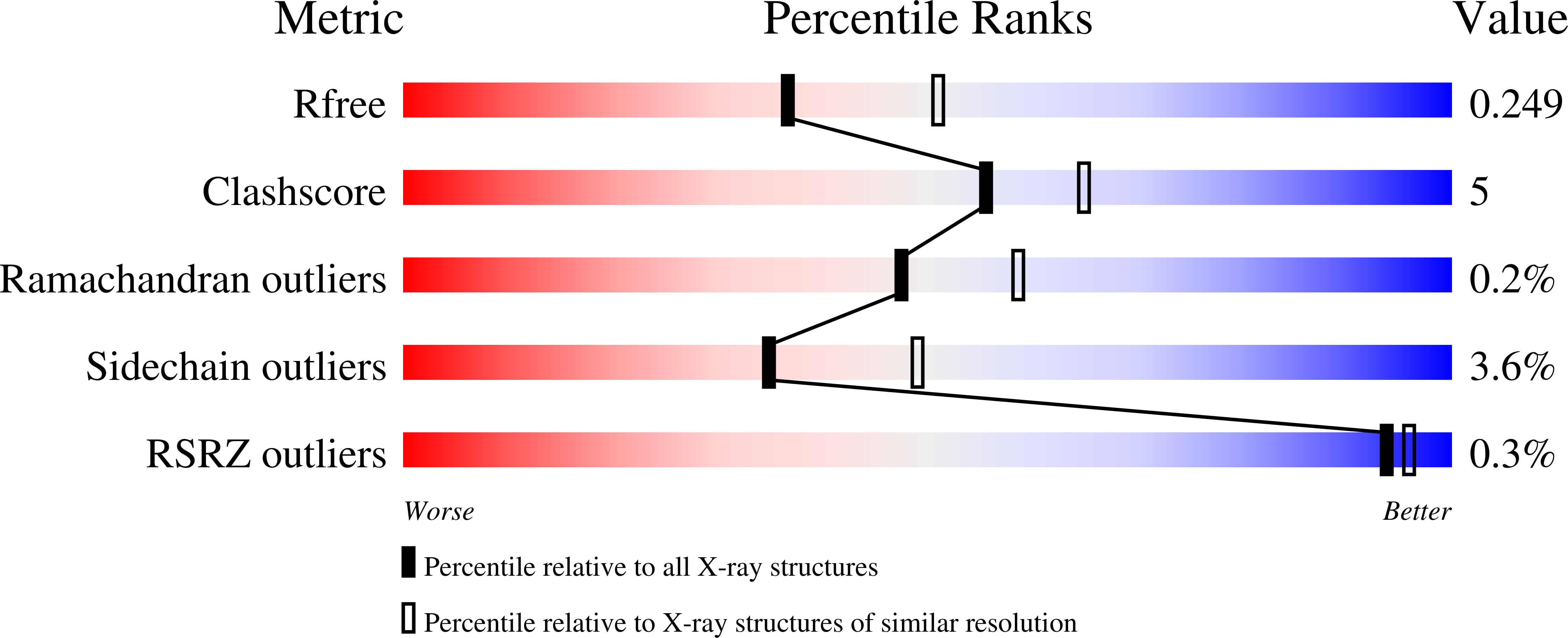Structural basis of leukotriene B4 12-hydroxydehydrogenase/15-Oxo-prostaglandin 13-reductase catalytic mechanism and a possible Src homology 3 domain binding loop
Hori, T., Yokomizo, T., Ago, H., Sugahara, M., Ueno, G., Yamamoto, M., Kumasaka, T., Shimizu, T., Miyano, M.(2004) J Biol Chem 279: 22615-22623
- PubMed: 15007077
- DOI: https://doi.org/10.1074/jbc.M312655200
- Primary Citation of Related Structures:
1V3T, 1V3U, 1V3V - PubMed Abstract:
The bifunctional leukotriene B(4) 12-hydroxydehydrogenase/15-oxo-prostaglandin 13-reductase (LTB(4) 12-HD/PGR) is an essential enzyme for eicosanoid inactivation. It is involved in the metabolism of the E and F series of 15-oxo-prostaglandins (15-oxo-PGs), leukotriene B(4) (LTB(4)), and 15-oxo-lipoxin A(4) (15-oxo-LXA(4)). Some nonsteroidal anti-inflammatory drugs (NSAIDs), which primarily act as cyclooxygenase inhibitors also inhibit LTB(4) 12-HD/PGR activity. Here we report the crystal structure of the LTB(4) 12-HD/PGR, the binary complex structure with NADP(+), and the ternary complex structure with NADP(+) and 15-oxo-PGE(2). In the ternary complex, both in the crystalline form and in solution, the enolate anion intermediate accumulates as a brown chromophore. PGE(2) contains two chains, but only the omega-chain of 15-oxo-PGE(2) was defined in the electron density map in the ternary complex structure. The omega-chain was identified at the hydrophobic pore on the dimer interface. The structure showed that the 15-oxo group forms hydrogen bonds with the 2'-hydroxyl group of nicotine amide ribose of NADP(+) and a bound water molecule to stabilize the enolate intermediate during the reductase reaction. The electron-deficient C13 atom of the conjugated enolate may be directly attacked by a hydride from the NADPH nicotine amide in a stereospecific manner. The moderate recognition of 15-oxo-PGE(2) is consistent with a broad substrate specificity of LTB(4) 12-HD/PGR. The structure also implies that a Src homology domain 3 may interact with the left-handed proline-rich helix at the dimer interface and regulate LTB(4) 12-HD/PGR activity by disruption of the substrate binding pore to accommodate the omega-chain.
Organizational Affiliation:
Structural Biophysics Laboratory, Highthroughput Factory, Coherent X-ray Optics Laboratory, RIKEN Harima Institute at SPring-8, 1-1-1 Kouto, Mikazuki, Sayo-gun, Hyogo 679-5148, Japan.















